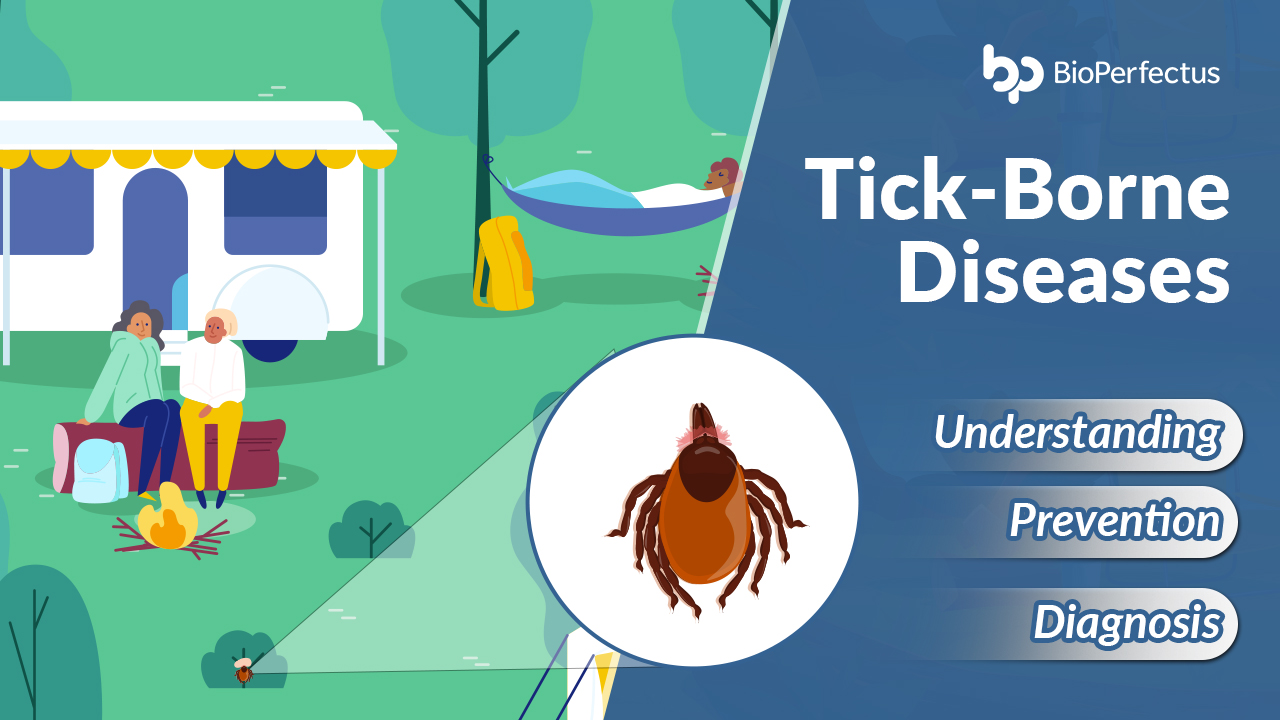
Tick-borne diseases pose a significant threat as the predominant vector-borne illnesses in temperate regions of North America, Europe, and Asia. In the United States, ticks account for over 95% of reported vector-borne disease cases. Among these, Lyme disease stands out as the most widespread tick-borne illness in the northern hemisphere. Studies suggest that the actual number of Lyme disease cases exceeds the reported figures by around 10-fold, with an estimated 300,000 annual diagnoses in the USA alone. Additionally, although roughly 10,000 cases of other tick-borne diseases are officially reported each year, it is highly likely that the actual number of cases far surpasses this count.
Furthermore, their impact is exacerbated by climate and environmental changes. These changes are anticipated to increase the prevalence of ticks, thereby heightening the risk of these diseases. Overall, tick-borne diseases pose a substantial burden on global health, necessitating urgent attention. Addressing the challenge of tick-borne illnesses is crucial for ensuring the protection of public health worldwide.

Map of Lyme Disease Incidence Rates (Reported Cases per 100,000 People)
Understanding Tick-Borne Diseases
- Tick-borne diseases are a group of illnesses transmitted to humans through infected tick bites. Common tick-borne diseases include Crimean-Congo Hemorrhagic Fever, Tick-borne Encephalitis, Severe Fever with Thrombocytopenia Syndrome, Anaplasmosis, Bartonellosis, Lyme Disease, Q Fever, Tularemia, Human Monocytic Ehrlichiosis, Heilongjiang Tick Typhus, etc.
- Symptoms often include fever, fatigue, headache, muscle and joint aches, swollen lymph nodes, and a characteristic skin rash. In severe cases, complications can affect the joints, heart, and nervous system.
Causes of Tick-Borne Diseases
- Tick-borne diseases are caused by various pathogens, including bacteria, parasites, and viruses, which are transmitted by infected ticks.
- The specific pathogens and diseases vary by geographic region and tick species.
- For Example:
Tick-borne Encephalitis: Tick-borne encephalitis is primarily caused by the Tick-borne Encephalitis Virus, which belongs to the Flaviviridae family. This virus is transmitted by infected ticks, primarily Ixodes ricinus and Ixodes persulcatus, in Europe and Asia.
Crimean-Congo Hemorrhagic Fever: Crimean-Congo Hemorrhagic Fever is caused by the Crimean-Congo Hemorrhagic Fever Virus, which is a member of the Nairovirus genus in the Bunyaviridae family. This virus is transmitted through the bite of infected ticks, primarily Hyalomma species ticks.
How to Identify Tick-Borne Diseases
Identifying tick-borne diseases can be done through serological testing, PCR, or culture methods. Among these, PCR testing plays a crucial role in the early detection of tick-borne diseases. Tick-borne diseases, including tick-borne encephalitis virus (TBEV), can be detected in the early stages of the disease course using PCR testing. RT-PCR, in particular, enables the detection of TBEV RNA in serum and cerebrospinal fluid (CSF) samples prior to the appearance of antibodies. PCR testing allows for swift and accurate diagnosis, enabling timely treatment and management of tick-borne diseases.
Prevention and Control for Tick-Borne Diseases
Prevention measures include wearing protective clothing, using insect repellents, avoiding tick-infested areas, and performing thorough tick checks. If a tick is found attached, it should be carefully removed using tweezers, followed by cleaning the area. Seeking medical attention is important if symptoms develop after a tick bite, as healthcare professionals can provide diagnosis, treatment, and guidance on managing tick bites and preventing further infections.
What Can BioPerfectus Provide for Tick-Borne Diseases Prevention and Control?
Accurate diagnosis of the cause is essential because each tick-borne disease requires different treatments, and it is challenging to differentiate these diseases based on symptoms alone. BioPerfectus offers a range of real-time PCR kits for the early identification and diagnosis of tick-borne diseases such as Tick-borne Encephalitis, Crimean-Congo Hemorrhagic Fever, and Lyme disease. Our products deliver reliable results without cross-reactivity. BioPerfectus is committed to supporting the prevention and control of infectious diseases by providing Total PCR Solutions, including instruments and reagents. Join the fight against tick-borne diseases with BioPerfectus Real-Time PCR Kits.

Learn more about our Tick-Borne Diseases products:
https://www.bioperfectus.com/ProductList?C=102
References:
1. https://www.cdc.gov/ticks/index.html
2. https://www.ncbi.nlm.nih.gov/pmc/articles/PMC7451033/
3. https://www.sciencedirect.com/science/article/abs/pii/S1386653206003192
4. https://www.canada.ca/en/public-health/services/reports-publications/canada-communicable-disease-report-ccdr/monthly-issue/2019-45/issue-4-april-4-2019/article-2-increased-risk-tick-borne-diseases-climate-change.html
5. https://journals.plos.org/plosone/article/figure?id=10.1371/journal.pone.0260122.g001

